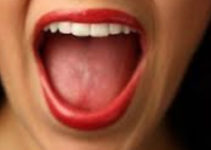
A novel therapy has been devised for survivors of stroke with hand weakness to help improve hand function through the use of a glove that delivers electrical stimulation.
Hand functionality was significantly more improved in participants who used the electrical stimulation glove.
About 800,000 people in the United States have a stroke each year, and one American dies from a stroke every 4 minutes, on average. Recovery from a stroke can take weeks, months, or even years. While some people fully recover from a stroke, others have long-term or lifelong disabilities.
Paralysis – an inability to move some parts of the body – or partial paralysis can result from stroke and cause weakness on both or one side of the body. Although rehabilitation does not “cure” the effects of stroke by reversing the brain damage caused, rehabilitation can help survivors relearn skills that are lost when part of the brain is damaged.
Paralysis usually affects the side of the body opposite to the side of the brain damaged by stroke, and it may affect the face, arm, a leg, or the entire side of the body.
Often the paralysis prevents the patient from being able to open a hand. A common rehabilitation technique to assist with improving muscle strength and potentially restoring hand function is using low levels of electric current to stimulate the paralyzed muscles and open the hand. A therapist is in control of the intensity of the stimulation, cycle time, and the number of repetitions.
Wearable technology puts patient back in control
According to new research published in the American Heart Association journal Stroke, researchers at the MetroHealth System, Case Western Reserve University, and the Cleveland Functional Electrical Stimulation Center have developed a therapy whereby patients can be in control of the stimulation to their weak hand.
The electrical currents are delivered using a glove with sensors. By wearing the glove on their unaffected hand and opening their fingers, the affected side receives a similar amount of stimulation to open the weakened hand. This wearable technology put the patient back in control of their hand while enabling them to participate in electrical stimulation therapy.
“Based on positive findings from our previous studies, we sought to determine if the new glove-controlled hand stimulation therapy could be more effective than the common therapy in improving hand dexterity in patients who are more than six months past their stroke,” says Jayme S. Knutson, Ph.D., senior author of the study and an assistant professor of Physical Medicine and Rehabilitation at Case Western Reserve University School of Medicine in Cleveland, Ohio.
Knutson and colleagues enrolled a total of 80 people who were survivors of stroke. The participants were divided into two groups. The first group received therapy using the new glove, and the second group received the standard treatment.
Both groups used the electrical stimulator on their own at home for 10 hours per week and practiced hand tasks with an occupational therapist in the lab for a further 3 hours a week. The course of treatment lasted 12 weeks.
Measurements of hand function were taken before and after therapy using a standard dexterity test that calculated the number of blocks participants could pick up from a table with their stroke-affected hand, lift over a barrier, and release to another area of the table within 60 seconds.
Almost all electrical stimulation glove users noted hand improvements
The researchers found that participants from the group that used the electrical stimulation glove presented greater improvement on the dexterity test by 4.6 blocks on average, compared with the common therapy group, which improved by 1.8 blocks.
Patients who displayed the most significant improvement on the dexterity test using the glove were less than 2 years post-stroke and had some finger movement at the start of the study. They improved by 9.6 blocks on the dexterity test, compared with 4.1 blocks in the common therapy group.
Patients with no finger movement at the beginning of the study also noted improvements in arm movement upon using the glove for the duration of the study. In total, 97 percent of participants agreed that their hand functioned better at the end of the study than at the beginning after using the new therapy.
The current research was conducted at a single site. The team aims to replicate the study at multiple sites in the future to confirm the results and also measure improvements in the quality of life for patients.
One key outcome of the investigation demonstrates that stroke patients can use the new technology to have the freedom and independence to administer their therapy at home rather than in a healthcare setting.
While the researchers speculate that the new electrical stimulation therapy’s success may be due to neural connections in the brain that control hand dexterity changing as a result of the treatment, they say that additional studies need to be conducted to verify the effect it may have on the central nervous system.
Written by Hannah Nichols, medicalnewstoday.com


